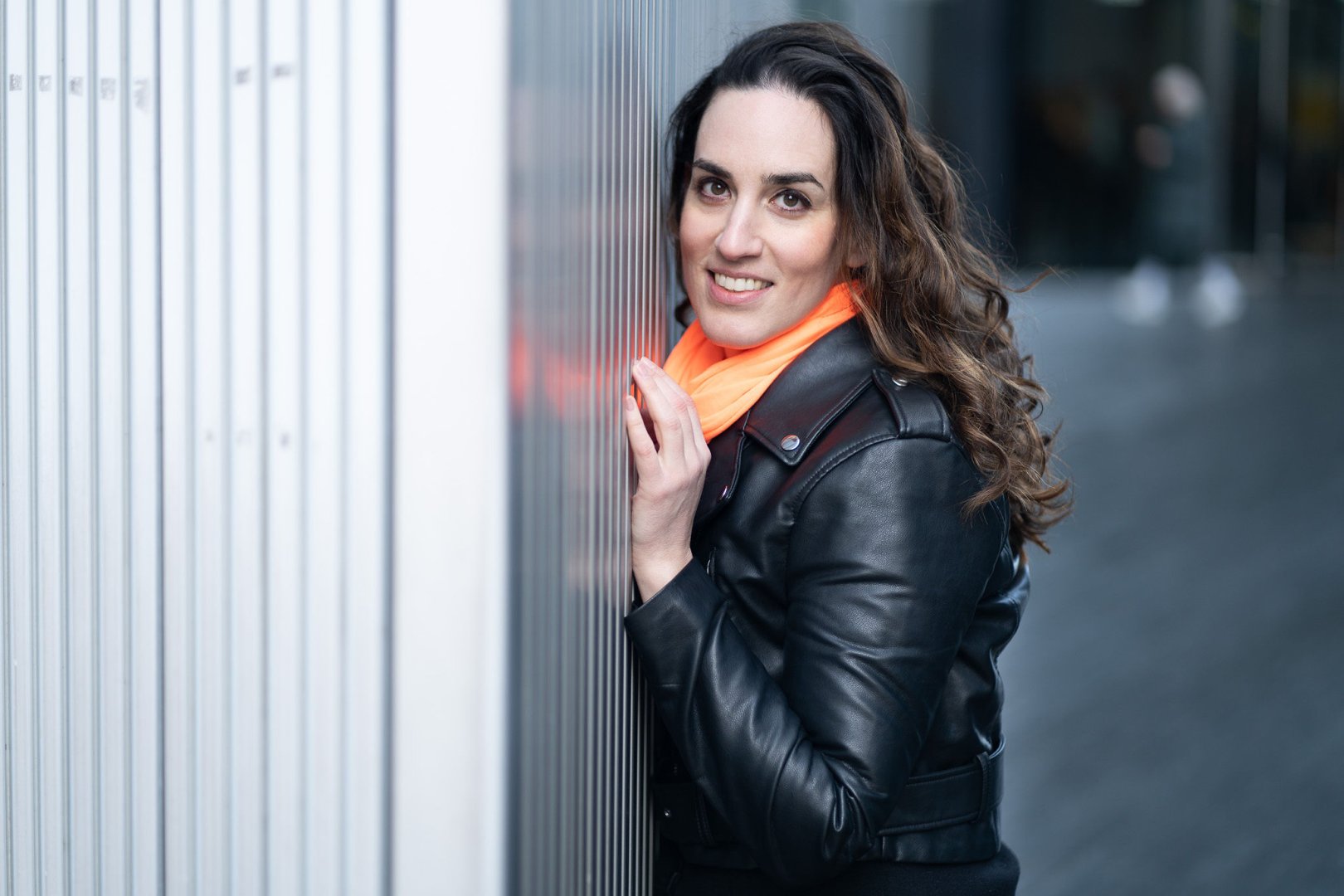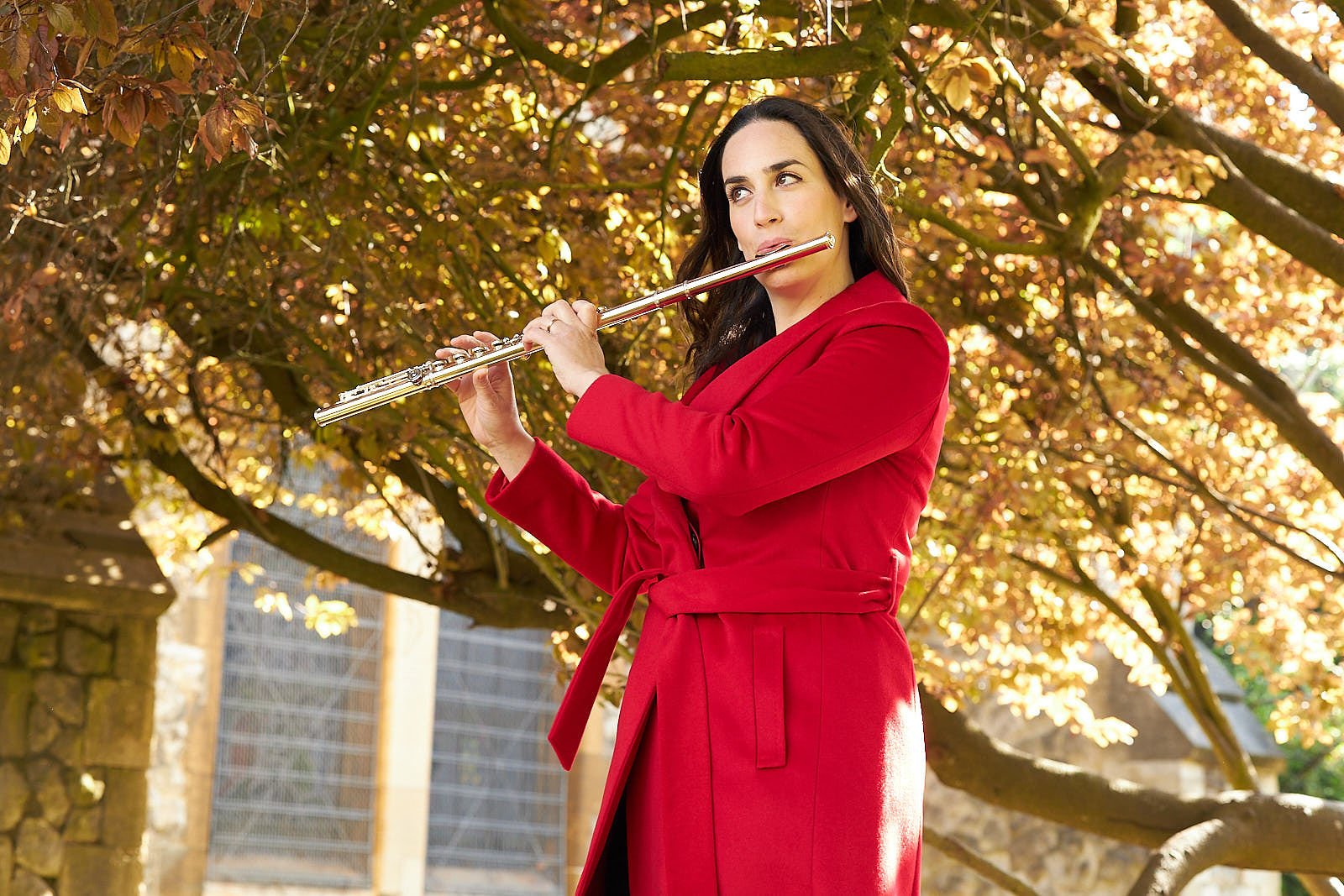Noémi Győri shows her playful, experimental side with her sixth album Exploration, recorded with pianist Suzana Bartal. The London-based flutist is looking forward to a busy season, including the performance of a concerto that has been composed for her. In addition to the latest news, we also talked about the challenges facing a woman building a solo career and Noémi’s own design collection.
– What was the concept behind the selection of the compositions for the album?
– The record focuses on a particular part of the Romantic flute repertoire, at that works in which variation form is evident. This was important for me because after 32 years of playing the flute, I feel that I have reached a level where I can really play the instrument and the music.
It always bothered me that classical musicians are seen as serious and gloomy. Perhaps that’s why I wanted to focus on musical playfulness and show how much freedom and humour there is in these large-volume Beethoven and Schubert pieces. These are complemented by a work by Blahetka and Borne.
– You recorded the album with pianist Suzana Bartal. Have you worked together before, or was this your first collaboration?
– Suzana and I have known each other for a long time, about 10 years, but this was the first time we worked together. I knew that she played a lot with flute soloists and wind instrument players, which was not a minor consideration, since the work by Schubert, for example, is a particularly challenging piece for the pianist as well. The plan for the album was born towards the end of the Covid period, so we had plenty of time to rehearse before the recording and we played the material at several concerts. A special gift in this project was the opportunity to record with an artist who is also very active as a soloist. As a flutist, I have often felt that, because of the repertoire, really excellent keyboard players prefer to work with string players. It feels good that by now this has already changed in my life.
– When we scheduled this interview, you mentioned that you have several flute concertos coming up this season. What will they be?
– In February I will play Jacques Ibert’s Flute Concerto twice with the Turku Philharmonic Orchestra in Finland, and in March I will perform Mieczysłav Weinberg’s Flute Concerto No. I at the House of Hungarian Music. Both works are considered outstanding in the 20th century flute repertoire, and it is a great pleasure for me to perform them several times and in such prominent places.
Weinberg’s work will be performed at the House of Hungarian Music in a series of weekend programmes organised by Dénes Várjon and Izabella Simon, where I am also scheduled to play chamber music with both of them. After that, in April, I will perform an exciting new flute concerto with the Royal Philharmonic Orchestra of Liège and my husband Gergely Madaras.
– What there is to know about this flute concert?
– The concerto, written for me by the English composer Christian Mason, will be the last stage of my Debussy project, which I started a few years ago. The first stop was the performance Afternoon of a Nymph, in which I performed flute works inspired by Greek mythology with pianist Zoltán Fejérvári, a recording of which will be released soon. The pieces were accompanied by poems written by Anna Szabó T. Through the texts, my aim was to give voice to the female perspective, in addition to seeing the male perspective.
I thought that this feminine side could be captured in a new piece of music, and that’s where the recently retired manager-director of the Orchestre Philharmonique Royal de Liège, Daniel Weissmann, came in. He invited me to give a concert with my husband and gave me the freedom to choose any concerto. That’s when I had the idea to link the invitation to my concept. The concert will open with one of the most important orchestral works in the French repertoire, Afternoon of a Faun, followed by the new flute concerto, and will close with another iconic work by Debussy, Nocturnes.

– How was it decided that Christian Mason would write the work?
– My first thought, as with the poems, was to collaborate with a female author. But in the end, I came to the conclusion that it is important to work with men in this women-themed project, because it is precisely the development of a kind of dialogue that is important to me. Christian, who has been a good friend of mine for over a decade, has a wife who is also a flutist and a mother who used to play the flute. In addition to being a great and sought-after composer, he is a particularly sensitive person who, thanks to our friendship of many years, has a clear understanding of my artistic process and the conceptual background behind the idea.
– How do you balance this intense professional life with family life? You are the mother of two young daughters and your husband is also a successful, constantly travelling, globetrotting artist.
– This is a very complex issue. It is physically and mentally challenging to build a soloist career as a mother alongside chamber music, orchestra and teaching. Not to mention that I also try to support my fantastically talented and successful husband. As a woman and as a flutist, I feel a certain pressure, because there are time constraints in raising a family, and also because it is not possible to play the flute as a soloist in the long run, as you can with the piano or the violin. A certain mental and physical fitness is important, and even when I’m young, it’s not always easy to achieve this fitness, for example when I’m travelling almost all the time alone with my two children.
At the same time, my family and the many experiences with my husband and children have made me much richer, both personally and emotionally. The literary or musical works that I really look up to usually express complex, multi-layered ideas – I feel that motherhood has helped me to understand and form a lot, and that I can express these complex, deep emotions more powerfully and authentically in my playing.

– What’s your method for reconciling so much and when can you recharge yourself?
– Fortunately, I am basically a quick learner. My doctoral training at the Royal Academy of Music has also shaped my working methods. I have learned to be more focused on what I want to achieve, how I can practice effectively and work consciously. Without it, it would be impossible for me to go about my daily life.
I don’t have much time to spend specifically on recharging myself, for example, I miss doing sports. But I’ve always done a lot of things in my life at the same time, and I feel that when I switch from one role to another, it’s almost a relaxation for me.
Although there are thankfully many more female instrumental soloists in my generation than there were even twenty years ago, I often feel that it is still difficult to become a reference artist as a woman, seen as a truly mature and sophisticated musician with an attitude-forming personality. Nor is the flute an obvious solo instrument, if only because of the relative unfamiliarity of the repertoire: the violin or piano repertoire is seen as much more traditional, intellectual and complex, both within the profession and among the public.
– The same experimentation and desire to reinvent can be seen in your own design collection, the Noemi Collection. How did this project get started?
– When I was growing up, I basically saw few female soloists on stage in Hungary. The people I met as a student were mostly young female talents. I felt that the female appearance and performance on stage was in many ways pigeonholed into the „cute little darling” image. I have often received feedback on how nice and angelic I was, when I would have preferred to be described as dynamic, convincing, powerful or charismatic. In addition to the musical expression, which is of course the primary aspect, I started to think of ways to express boldness and creativity in both my playing and my appearance, beside femininity.
That’s how the Noemi Collection came about over the years, all of which are specifically related to classical music, but I also recommend them to non-musicians as well. Most recently, for the Arcus Temporum Festival in Pannonhalma, Adél Zsigmond from Miercurea made two fantastic dresses for me. I’m constantly working on this project; my goal is to one day be „the Noemi Collection” myself, a person who always shows up in a unique outfit that has its own story and musical connections, the pieces of which are more than just dresses or jewellery. This might be a way to show how to be feminine in everyday life and on stage, but also be creative and attention-grabbing. Perhaps over the years, all of this will come together to form a strong, tangible whole, complementing my artistic work, and through it I can possibly shape the world a little.











